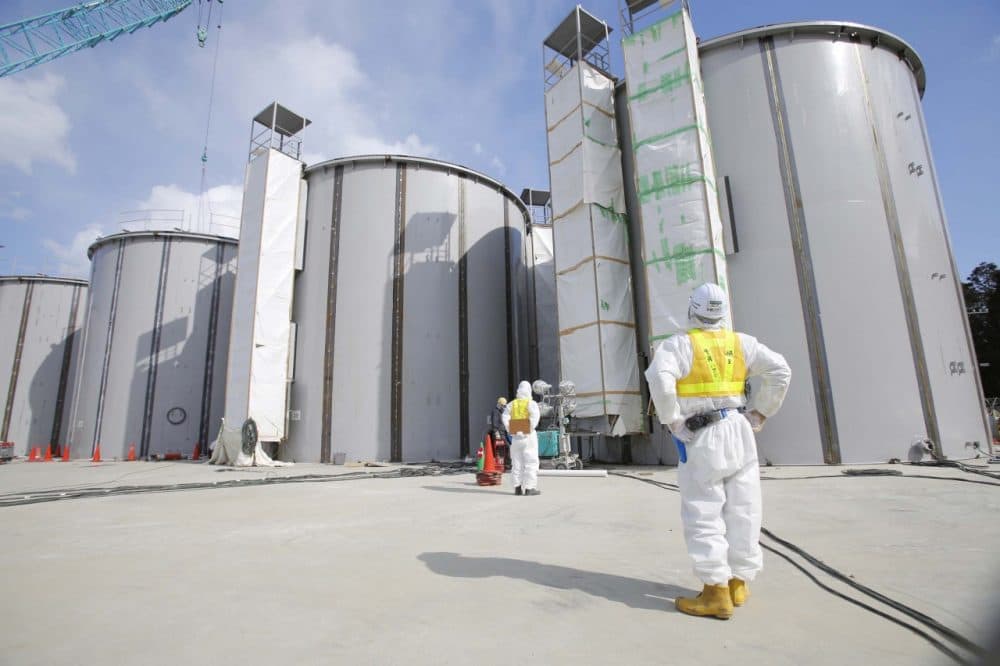Advertisement
After Three Years, 'The Biggest Threat For Fukushima Is Still In The Future"

Three years after a devastating earthquake, tsunami and nuclear disaster crippled the northeastern region of Japan surrounding the now-shuttered Fukushima Daiichi Nuclear Power Plant, experts say the biggest dangers might still be on the way.
Future earthquakes, tsunamis or meltdowns could shake the region again, and the country's ongoing and heavy use of nuclear energy presents real concerns for anti-nuclear activists who say there's too much at risk to continue to depend so strongly on nuclear power plants.
Part of our Tuesday, March 11 broadcast included a take on the third anniversary of the disaster, with an update from Tokyo Reuters' correspondent Antoni Slodkowski and a look forward from Edwin Lyman, senior scientist of the Global Security Program at the Union of Concerned Scientists.
"The biggest threat is still in the future,"Lyman told us.
Is Lyman right? Is there too much at risk to continue to rely on nuclear energy? Or is nuclear energy the best option for our growing energy needs?
Let us know in the comments below, or on Facebook, Tumblr and @OnPointRadio.